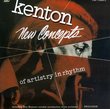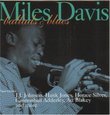| All Artists: George Enescu, Kremerata Baltica, Gidon Kremer, Dzeraldas Bidva, Ula Ulijona, Marta Sudraba, Andrius Zlabys Title: George Enescu: Octet Op. 7; Quintet Op. 29 Members Wishing: 1 Total Copies: 0 Label: Nonesuch Release Date: 5/21/2002 Genre: Classical Styles: Chamber Music, Historical Periods, Classical (c.1770-1830) Number of Discs: 1 SwapaCD Credits: 1 UPC: 075597968224 |
Search - George Enescu, Kremerata Baltica, Gidon Kremer :: George Enescu: Octet Op. 7; Quintet Op. 29
 | George Enescu, Kremerata Baltica, Gidon Kremer George Enescu: Octet Op. 7; Quintet Op. 29 Genre: Classical
If, indeed, this is the first recording of George Enescu's Piano Quintet Op. 29, where has this passionate, big-boned masterpiece been hiding since it was written in 1940? It has everything: long, surging melodies; ravishi... more » |
Larger Image |
CD DetailsSynopsis
Amazon.com If, indeed, this is the first recording of George Enescu's Piano Quintet Op. 29, where has this passionate, big-boned masterpiece been hiding since it was written in 1940? It has everything: long, surging melodies; ravishing harmonies best described as "red meat Fauré"; delicate counterpoint that suddenly explodes into orchestral ecstasy; sustained string lines decorated by magical keyboard flourishes. Stylistically, it sounds as if it could have been written before the same composer's Op. 7 Octet from 1900, whose terse idiom and restless polyphony wouldn't be out of place in Shostakovich. Nonesuch provides engineering that's roomy yet well-defined, and perfectly suited to these works. And how are the performances? Passionate and big-boned, for starters, and lovingly prepared. In the Octet, Kremer sometimes lunges at high notes with tremulous intonation, but not in the Quintet. If you're a chamber music fan bent on new discoveries, this disc is for you. Highly recommended. --Jed Distler Similarly Requested CDs
|
CD ReviewsEnescu the Architect Todd Montgomery | Wilmore, KY USA | 04/14/2004 (5 out of 5 stars) "George Enescu said of the octet, featured on this disc, that it was more like architectual design than composing. This can be heard in the connections he makes between the movements, which, although in a traditional 4-movement form, is really more like a single sonata form spread across those movements. The resulting unity is astonishing. The main theme is expressed in many ways through call-and-answer interactions between the string players, making it easy to get lost in the delightful playfulness of the piece. The result of eight parts in this octet is a little like the effects of multiple concussions to the head. Instead of 2+2=4, and 4+4=8, it sounds more like 2+2=7 or 8, and 2+2+2+2=not being able to count at all. This is one of the first major works he composed after his student years, and it is one of his first major successes. A great one. The quintet is a later work, and a little bit more difficult to understand. Listeners will hear most readily the impressionistic influence, but there is much more to it than that. Like the octet, the quintet does not show as strong an influence of folk music as some of the composer's popular work does, but rather an incredibly detailed design. Many reviewers struggle to thoroughly describe this music. If you listen, you'll know why; it doesn't fit any preconceptions. One reviewer coined the term "Romantic Impressionism" to describe it. The Amazon reviewer sums it up as "Red Meat Faure." I like both, but hope listeners will agree with me that these descriptions indicate an inadequacy on our part. Just listen to it, and come to know it as the true Enescu, and nothing else. This is music that we should be judging other compositions by, not vice-versa. I agree with another reviewer in advocacy of repeat listenings to this work. Its not just pretty, not just interesting, it is profound. Both of the works are beautiful, charming, charicteristic of the composer, and performed as such by Gidon Kremer and his fellow musicians. I wouldn't be the first in saying that anything he records will be worth listening to, and this is another case of his work shedding light on an unfairly neglected composer. This is recommended without reservation, but don't stop here. Enescu was a true master musician--his knowledge coming from all spheres of music: composing, performing (piano and violin), conducting, and teaching. Because his work was so spread out, he wasn't as prolific as many, but the works he left us should be cherished as much as any from the last century. Truly, his musical thoughts are as profound, if not moreso, than those of Stravinsky, Sibelius, Shostakovich, or Britten, to name a few. If you're unfamiliar with him, Kremer's disc is a great place to start." An obsession Jeffrey Jones | Northern California, USA | 05/29/2002 (5 out of 5 stars) "George Enescu is a composer on the fringes of the repertoire. He is well-known for his Rumanian Dance for orchestra, but the rest of his music, much of which is completely different, is on the obscure side. This was actually the first recording of the Piano Quintet; there is now a second one available cheaply on Naxos, coupled with the Piano Quartet No. 2. This recording is simply magic. I have no other way to describe it. It will take even the most expert listener many listenings, and a lot of time, to understand the extent to which Enescu's genius is brought across in this recording. You could listen to the Quintet a hundred times, a thousand times, a million times and still get new things out of it. And Kremer's ensemble, together with fantastic Lithuanian pianist Andrius Zlabys, play with a heartfelt, divinely rarefied warmth. So my recommendation: pony up the extra money and buy this recording over the Naxos, sight unseen. You will not be disappointed." WOW! Jeffrey Jones | 06/10/2004 (5 out of 5 stars) "The Piano Quintet, Op. 29 is simple astounding. Black tears; this Quintet is the "tear-stained flower of the poet's mind." Here, one is not asked to listen to melody, but rather a cascade of threads of melody woven together in the subconscience. This is impressionism in its most quintessential form. I highly recommend this recording for its addition of this marvelous Piano Quintet - a gem of the modern world."
|

 Track Listings (8) - Disc #1
Track Listings (8) - Disc #1





